Light as Scenery and Special Effects
Cycs usually respond very well to front lighting. In the past, simple “strip lights” were used, but their inefficient reflector design (if any) meant that the light they threw on the cyc would taper off and run out well before the light was able to cover the entire area. In an effort to alleviate this problem, designers would often use a second set of strip lights from below, hidden by some type of “ground row” scenic element (whether it be a row of bushes, or a simple black rectangle).
The negative impact of ground rows, which created a distinct barrier from floor to ceiling, could often be better hidden when the scenic designer was informed early enough about this desired treatment, so that they he or she could integrate the ground row into the original design.
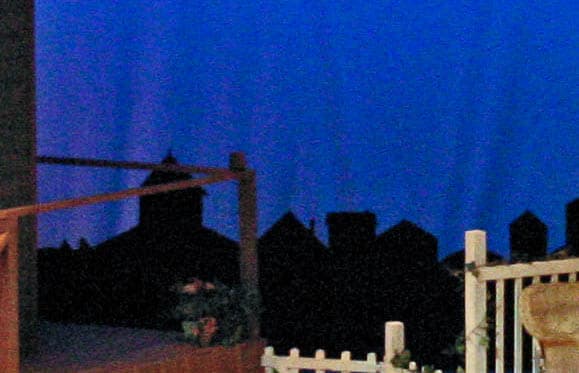
There was a ground row used in this production of “Picnic”.
| An advantage of using lighting sources from both above and below the cyc, was that, (if dimmered properly,) the lighting designer was given more freedom to play with the cyc, thus doubling the lights’ ir color palette. Far cyc instruments, with a reflector specifically designed to combat the disbursement problems of strip lights, helped the lighting designer by giving them a tool that could make a much smoother field of light. Front-lit cycs, along with upstage walls, have the problem of shadows. While the sky never has shadows thrown on it by people walking on earth, cycs often have the problem of dancers and actors throwing shadows on them when they venture too far upstage. In conjunction with this problem, light meant to hit performers that who go too far upstage also tends to “bleed” onto the cyc; which can disrupt the smooth color look desired by the designer even if the actors aren’t standing upstage. Another challenge presented by cycs, is that when they are not in use (not lit); they tend to create a very large, proud gray block upstage –, as the ambient light from other areas makes is it so that the cyc never truly “goes away”. | 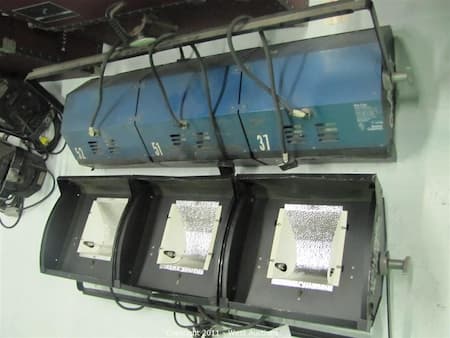 Three-cell far-cycs (front and back). Learn more about far-cycs here. |
The best way to alleviate the shadow / white band problem caused by performers is to make the cyc colors appear more saturated. A nifty way to make the cyc “fade away” when not in lit is by the use of a scrim (also called a sharkstooth scrim).
Trouble viewing the video? Watch it directly on Vimeo or YouTube.
Trouble viewing the video? Watch it directly on Vimeo or YouTube.
A scrim is an “open weave” fabric, available in white, blue, paintable white, and the standard black. Scrims tend to run at about 30% (which means there is a fabric roughly 30% in visual thickness). When lit at a 45-degree angle from the front, and not lit from behind, scrims take on an opaque appearance.
Trouble viewing the video? Watch it directly on Vimeo or YouTube.
Trouble viewing the video? Watch it directly on Vimeo or YouTube.
| When a backdrop upstage of a scrim is lit, the scrim appears to “disappear”, and the view of the cyc (or backdrop) goes seemingly uninterrupted. Scrims can also help make people, and in fact, entire scenes appear or disappear by the designer simply adding or removing light from the front of them. Scenes that take place upstage of a scrim also take on a “misty” atmosphere, almost as if from the memory of someone’s mind. Because we often want scrims to become invisible, it is desired that they be seamless. Otherwise, when a cyc or drop is lit upstage of the scrim, there are large bands streaking the sky. Since a seamless scrim needs to be at least 19’-0” high and 40’-0” wide, depending on the size of the theatre, it is very expensive. Paintable scrim can be dyed. You wouldn’t want to really use paint, because paint would likely be opaque, thereby defeating the main use of a scrim to add either a texture to the scene or drops behind it. In the 1996 Broadway revival of “Guys and Dolls”, the scrim was painted to look like the set, which can then “come to life” as lights were turned on behind it. Pieces of scrim can also be an effective scenic effect for other applications. | 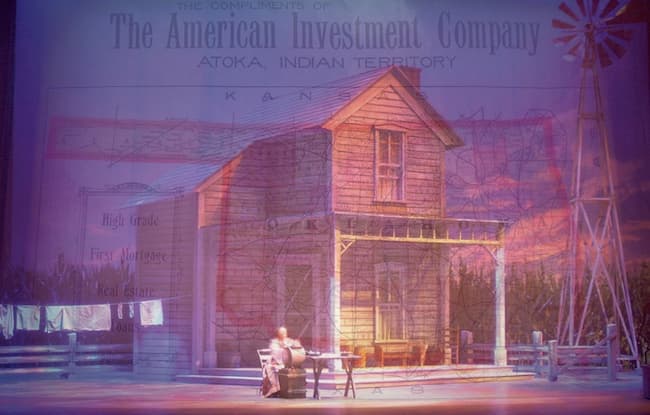 Painted scrim example by Rose Brand - a leading manufacturer of theatrical fabrics. |
With no lighting upstage of a scrim, it appears to be a solid blackView from front of house / row 1.
Les Miserables production photoLit actors upstage of the scrim appear to be "memories"View from far house left.
Les Miserables production photoLit actors upstage of the scrim appear to be "memories" or "ghosts"View from front of house / row 1.
Les Miserables production photoWalls offer challenges similar to cycs. Because performers are often close to walls, they often throw undesired shadows. This is not always a problem because people are used to seeing shadows on walls (as compared to the unnatural appearance of a shadow on the sky), but the designer should be sure the shadows make sense.
Wall sconces, which can add great visual texture to a set, can mistakenly throw an odd shadow on the wall, odd because most sconces, being light sources, don’t normally throw shadows on walls.
Walls that are left unlit, however, often have ugly, unnatural shutter cut remnants caused by other area lights.
Remember that interior lighting usually comes from ceiling fixtures, so we are use to seeing “cones” or “arches” of light on the walls – with the corners fading to shadow.

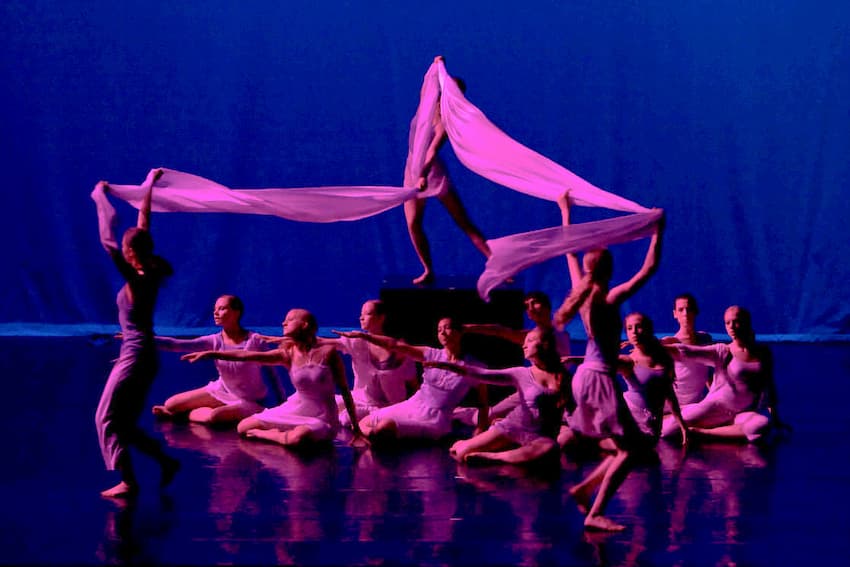
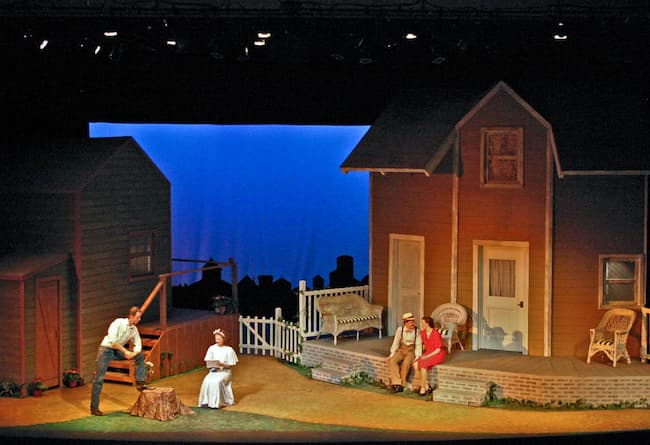
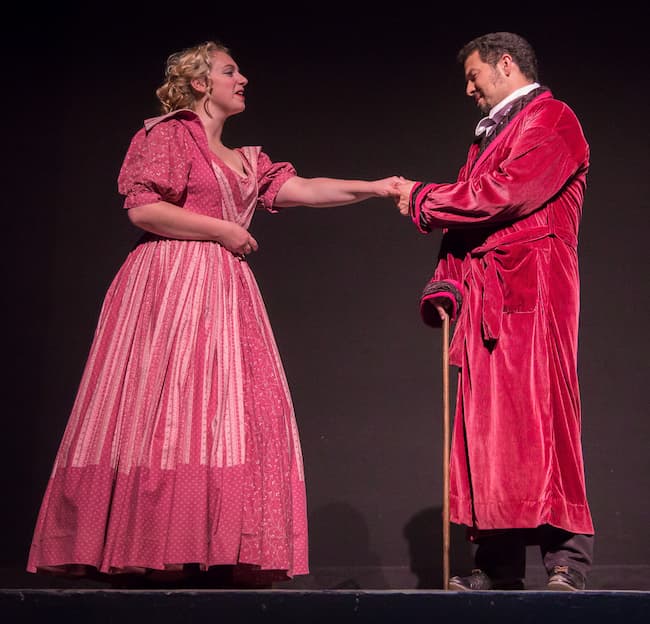
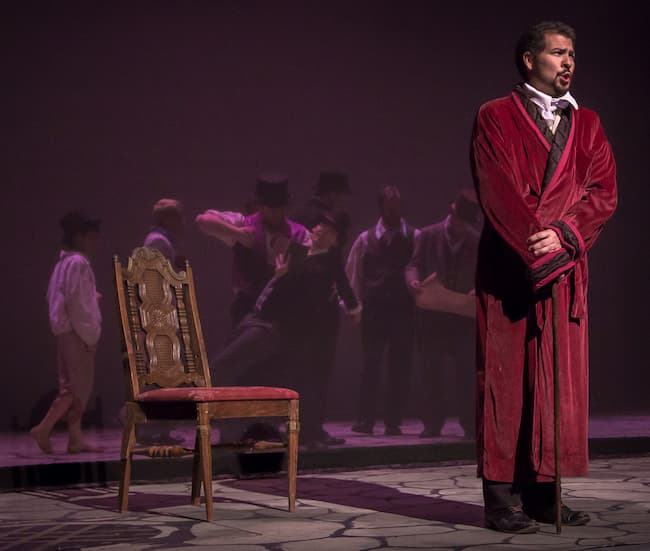
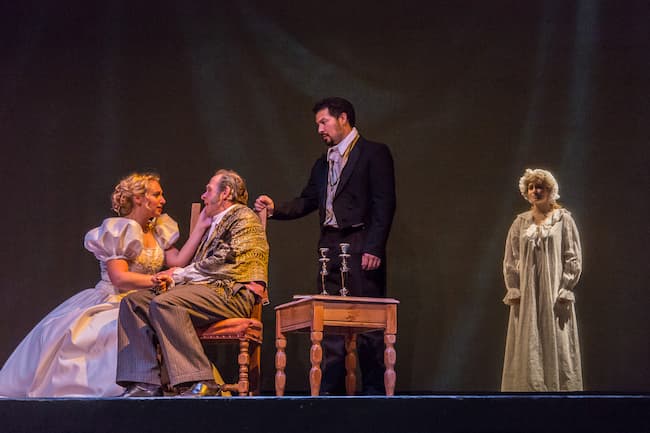
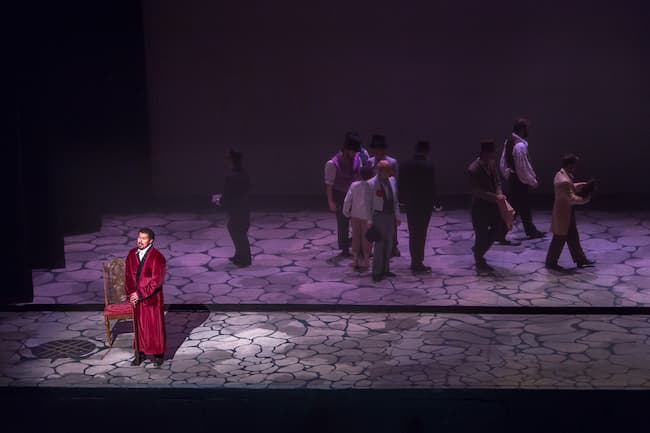
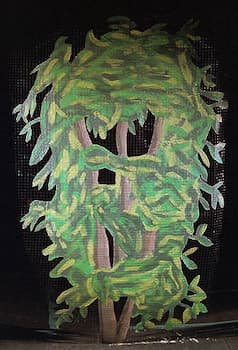

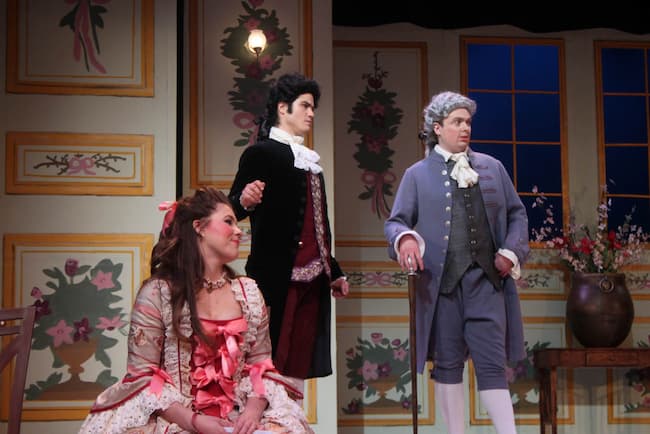
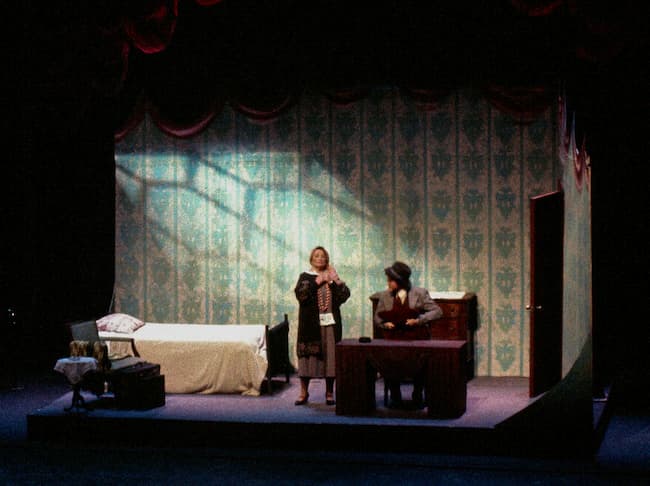
 © Multimakers Multimedia
© Multimakers Multimedia